Field Testing Gold Ores
Part 1: Free Milling Ores versus Base Ores
By Kerby Jackson
It seems that not a day goes by that some Facebook mining group isn’t frequented by posts depicting photos or quartz or other rocks along with the question of “Is there gold in this?” These questions are usually followed by a flurry of answers, some of them sometimes insightful, but with a majority of them posted by miners who are probably just as uniformed on the subject of lode mining as the person asking the question.
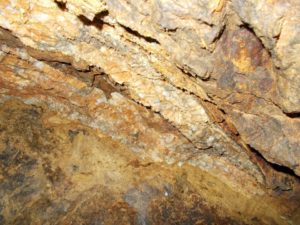 This situation is understandable when one considers the fact that until recently, interest in lode mining among independent miners had all but vanished, having been a casualty of the Limitation Order L-208 during World War Two that practically eradicated small scale lode mining in the United States. Over the coarse of a few generations, knowledge of lode mining, the identification of common ores and a working knowledge of historic lode mines throughout the Western States was all but lost, so it’s really no wonder why the most practical of basics on the subject are not widely understood by the average miner.
This situation is understandable when one considers the fact that until recently, interest in lode mining among independent miners had all but vanished, having been a casualty of the Limitation Order L-208 during World War Two that practically eradicated small scale lode mining in the United States. Over the coarse of a few generations, knowledge of lode mining, the identification of common ores and a working knowledge of historic lode mines throughout the Western States was all but lost, so it’s really no wonder why the most practical of basics on the subject are not widely understood by the average miner.
Fortunately, with the ever increasing restrictions on placer mining, as well as some high profile pocket gold discoveries here in the Klamath Mountains some five or so years ago, more attention is now being paid to those long abandoned and much neglected lode mines and quite a lot of miners are now making a habit of picking up likely looking pieces of float and taking samples 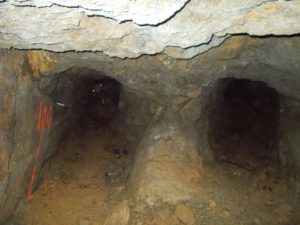 from veins they encounter in areas known for lode gold. In spite of this, there is still a lot of misunderstandings on the subject to the extent that some miners have literally filled up the backs of their trucks with quartz from old mine sites or from vein exposures on roadsides, invest money into relatively extensive milling equipment set ups, but are then left scratching their heads when they fail to find much gold from the truckload of quartz they picked up. A rare few, whether by luck or by more careful study on their part, have however, have had such success that they are starting to wonder why they didn’t take an interest in lodes years ago, because they have learned what some of us have known for years – that if you want to mine full time and do it successfully, it is far more likely to happen through lode mining than it is through placer mining. This is especially so with the current regulatory problems affecting suction dredging and high banking, while small scale lode mining remains almost completely unaffected.
from veins they encounter in areas known for lode gold. In spite of this, there is still a lot of misunderstandings on the subject to the extent that some miners have literally filled up the backs of their trucks with quartz from old mine sites or from vein exposures on roadsides, invest money into relatively extensive milling equipment set ups, but are then left scratching their heads when they fail to find much gold from the truckload of quartz they picked up. A rare few, whether by luck or by more careful study on their part, have however, have had such success that they are starting to wonder why they didn’t take an interest in lodes years ago, because they have learned what some of us have known for years – that if you want to mine full time and do it successfully, it is far more likely to happen through lode mining than it is through placer mining. This is especially so with the current regulatory problems affecting suction dredging and high banking, while small scale lode mining remains almost completely unaffected.
It is my hope to shed some light on some basics of field testing ores in the hope that more and more miners will have the knowledge close at hand to allow them to become successful, as it seems that if the small scale mining industry is to survive and become prosperous again, it is most likely to arise from the exploitation of known historic lode mines and those still waiting to be discovered.
Free Milling Ores versus Base Ores
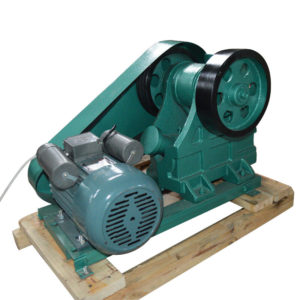 For the most part, though there are as many varieties of gold ore as there are gold bearing veins in the world, as a general rule of thumb, there are really only two major categories of gold ores that miners should be immediately concerned with, as understanding their difference is likely to determine whether a small scale miner becomes successful at this or not. These two types of ore are commonly known as Free Milling Ore and Base Ore.
For the most part, though there are as many varieties of gold ore as there are gold bearing veins in the world, as a general rule of thumb, there are really only two major categories of gold ores that miners should be immediately concerned with, as understanding their difference is likely to determine whether a small scale miner becomes successful at this or not. These two types of ore are commonly known as Free Milling Ore and Base Ore.
Free Milling Ore can best be described as a gold ore that when crushed, gives up a majority of gold that can be seen by the naked eye or under a hand loupe or microscope. Though the size and shape of the liberated gold creates many variables in how efficiently it might be recovered by typical gravity separation methods, at least in theory, free milling gold can be recovered by merely crushing it and then concentrating it. By contrast, Base Ores are those in which the gold is tied up in some sort of ore mineral such as arsenopyrite, chalcopyrite, galena, pyrite, malachite or other sulfide. Though fine grinding can sometimes liberate encapsulated gold from a sulfide, more often than not, some sort of chemical processing method is typically required to recover a majority of gold from a base ore. In spite of this, short of seeing physical gold in an ore specimen (this is very, very rare), to the untrained eye (and even sometimes to the trained eye), it is almost impossible to eyeball most ores and say for fact, “this is free milling ore” or “this is base ore”, because almost all free milling gold ores are just as likely to exhibit some variety of sulfides to the naked eye, just the same as a piece of base ore does.
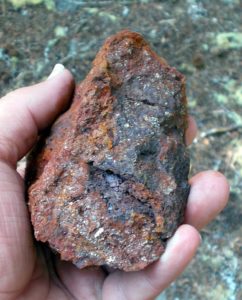 Though some small miners do practice chemical processing and work with base ores successfully, most of them have a high knowledge of chemistry and metallurgy and have spent years studying and refining their methods. The majority are also explicit in their warnings that their work is far from child’s play and that their methods can be harmful if not conducted with great care. Few of them will suggest that you should rush out and obtain such and such chemicals and begin working your ore up without proper training, much study and a knowledge of how to handle the materials used or how to dispose of the wastes created by the process. Unless you consider yourself scientifically minded, processing base ore is best left to experts on the subject, and even if you are a scientifically minded miner, obtaining a mentor on the subject to help you learn the ropes is much recommended.
Though some small miners do practice chemical processing and work with base ores successfully, most of them have a high knowledge of chemistry and metallurgy and have spent years studying and refining their methods. The majority are also explicit in their warnings that their work is far from child’s play and that their methods can be harmful if not conducted with great care. Few of them will suggest that you should rush out and obtain such and such chemicals and begin working your ore up without proper training, much study and a knowledge of how to handle the materials used or how to dispose of the wastes created by the process. Unless you consider yourself scientifically minded, processing base ore is best left to experts on the subject, and even if you are a scientifically minded miner, obtaining a mentor on the subject to help you learn the ropes is much recommended.
With this in mind, the first basic rule of field testing ores are to focus on areas that are best known for containing deposits of free milling gold that can be recovered without expensive and 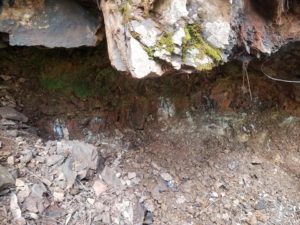 sometimes dangerous chemical processing. Fortunately, there are a wide range of books available on the subject of historic lode mining areas that will reveal insights into whether such and such historic mine or its vicinity tended toward free milling or base ores. As a general rule of thumb, mines that were always successfully worked through the use of amalgam plates or with methods of gravity separation, are good candidates for prospecting for free milling ores, especially if they are described as mines with shallow workings. By contrast, mines which employed cyanide plants or are described as “deep mines” are almost always deposits of base ore and though it may be educational to “go kick some rocks around” on these types of mines for a day, they are unlikely to be good places to prospect for free milling ores.
sometimes dangerous chemical processing. Fortunately, there are a wide range of books available on the subject of historic lode mining areas that will reveal insights into whether such and such historic mine or its vicinity tended toward free milling or base ores. As a general rule of thumb, mines that were always successfully worked through the use of amalgam plates or with methods of gravity separation, are good candidates for prospecting for free milling ores, especially if they are described as mines with shallow workings. By contrast, mines which employed cyanide plants or are described as “deep mines” are almost always deposits of base ore and though it may be educational to “go kick some rocks around” on these types of mines for a day, they are unlikely to be good places to prospect for free milling ores.
